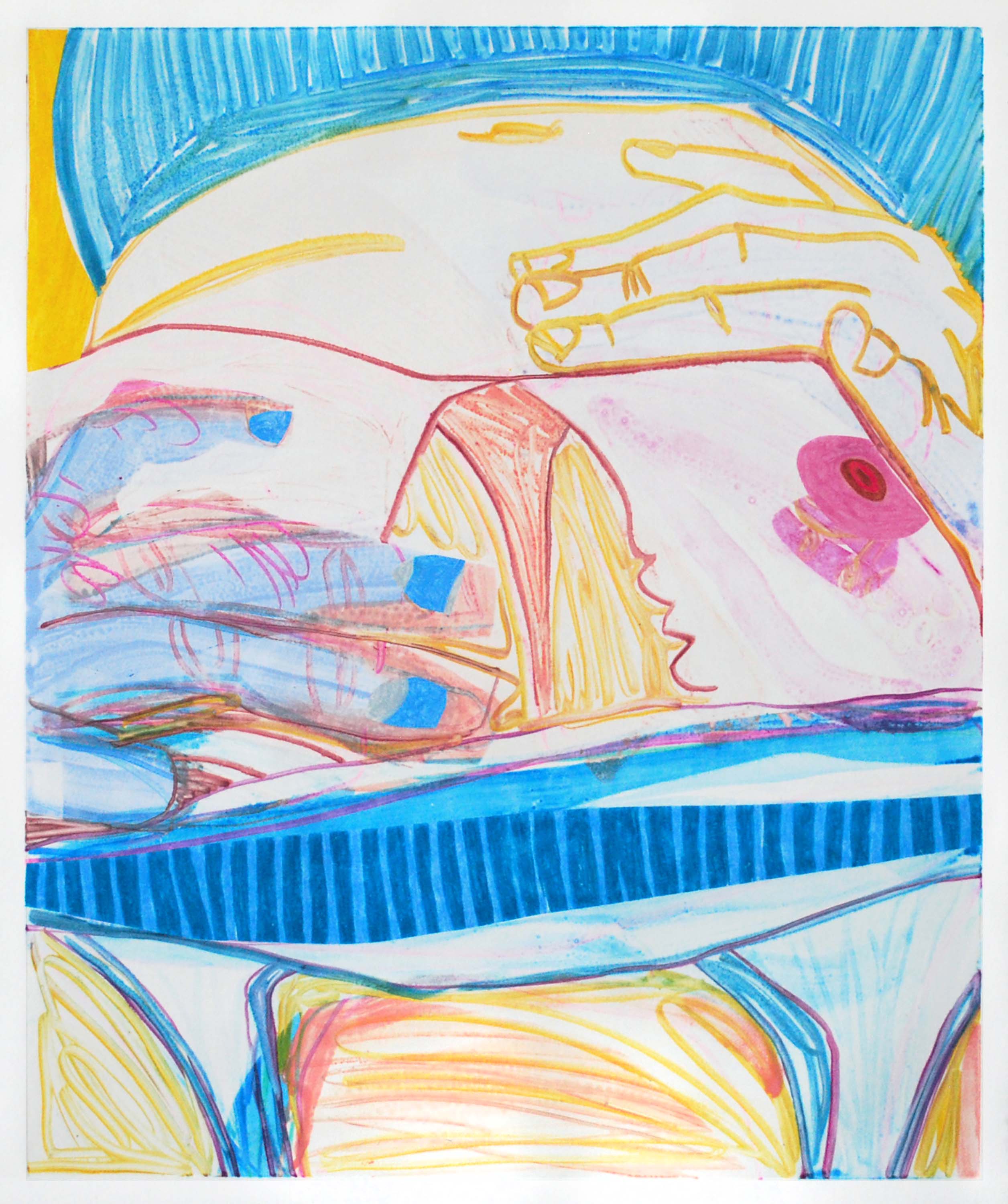
For Sarah Faux‘s Cultured Commission, a series of four bodily topographies—each a monotype—dance in the space between abstraction and figuration.
Your paintings carry a lot of visible energy—is painting an outlet or a meditative task for you? Are there particular emotions you sort through when you’re creating work? Painting is meditative for me in the sense that it requires presence, but it’s not relaxing. Often I’m in an anxious, agitated state when I’m working, and that’s crucial. My process of making has to be its own drama for the piece to have real energy. Actually I think a lot about processing in general: perceptual processing, therapy, process painting. I’m usually focused on feelings that require processing, moments of touching or being touched that contain both pleasure and pain, like falling for someone or like sleeping with an ex.
How did the series “Feel Flows” come about? I’d been drawing from life a lot from a first-person point of view, since that’s where I am all the time, in my own body. So this imagery of looking down at a chest emerged right at the moment when I wanted to make some larger monotypes. The series’ title “Feel Flows” comes from a trippy ’70s Beach Boys song but really I just loved those words together, and the idea that each print is a flow of sensation.
Can you describe your process for making these monotypes? Fast, impulsive. I use watercolor, markers and crayons directly on a Plexiglass plate and then rest some collage parts on top of the painted glass. When everything has dried, I’ll put a sheet of wet paper over it and run them through the printing press. That damp paper reactivates the painting underneath it, and you get a monotype. But you only get one, hence “mono.”
In what ways does making monotypes allow you to approach your work differently than the other mediums you use? There’s a casualness and lack of control in monotypes that I find pretty thrilling. I can put a bunch of elements into play, but I don’t know how the print will turn out, and there’s no revision: either keep it or throw it away. When a print really works the satisfaction is that much more ecstatic.
Given the angles and perspectives portrayed, what role does the viewer play? A feminine POV is kind of a trusty feminist trick at this point, à la Joan Semmel’s early paintings. Essentially I’m flipping the male gaze, forcing the viewer into a feminine body. Then by leaving my imagery fluid, that same viewer has to slow down to understand what they’re looking at. So someone might have to project their own physicality into a piece in order to decode it. And I just learned that the word empathy comes from a German concept of projecting yourself into a work of art. If I can impel someone into a state of empathic looking, I’d feel pretty good about that.
Can you talk about what you see in the relationship between bodies and landscapes? The landscape I’m most connected to besides the city is the ocean. I’ve spent a lot of time on rocky New England beaches, feeling that vast sky and water. People contain interior expanses like that too—emotional landscapes. While I don’t set out to turn bodies into oceans, I do want each body I depict to exceed its own boundaries and blur that division between inside and outside.
Sarah Faux’s Cultured Commission is available for purchase on 1stdibs.










 in your life?
in your life?

